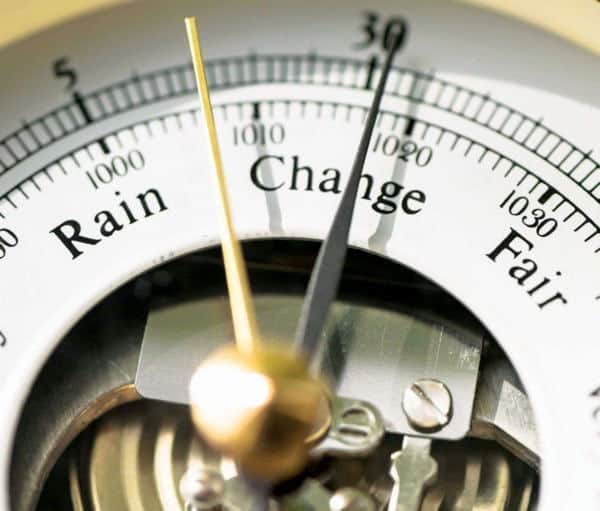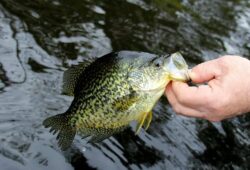Barometric pressure is an important factor when you want more chances of success when fishing. However, it may also be one of the least understood factors which affect how fish act! I know how confusing it must seem at first, which is why I tackled this topic before and want to share more about how to read barometric pressure for fishing.
So, how do you read barometric pressure and when do you know if it’s a good day to fish? Read on as I show you how to understand barometric pressure!
Contents
How to Read Barometric Pressure For Fishing
Barometric pressure is defined as the mass or weight of an air column on a certain surface area at sea levels. To make it easier to understand, this is also known as air or atmospheric pressure, the weight of air pressing down on everything, including fish and us anglers!
Yes, the air has mass and we just can’t feel it because we’re accustomed to the pressure. However, this air pressure would also affect food chains, both above and beneath waters.
Altitude, along with high and low-pressure weather systems, would affect the barometric pressure. And even the slightest changes in it can cause huge variations in fish behavior. Think of it as a minor change in gravity, and when you upset the delicate balancing act regularly, it will have fish either stay in the shallower or deeper areas.
There are various ways you can read barometric pressure, either by searching online for the certain date and area’s measurements or by using your own barometer. There are manual and digital barometers you can invest in for a more accurate reading in your area.
Checking the fishing forecast is optimal, and you can interpret the pressure in these ways:
High Pressure
During high pressure, the bait will stop coming to the water’s surface. You’ll notice that mullets stop jumping and birds are sitting on the water, if you do get to see any!
The fish will be on the bottom of the deep waters and not actively feeding. Sometimes, they do feed on dead or cut bait, but it’s not the best time to fish.
Low Pressure
Mullets are somewhat active during this time and the birds won’t sit on the water, flying around but not feeding. Fish will be moving around, but appearing nervous. While they will be feeding, it’s a bit tough to catch them and you have to fish from a distance to avoid spooking them!
Moving Pressure
When the pressure is moving up and down, this is a good day! Fish act differently as the pressure rises and falls, but either way, they are most likely feeding. The only bad thing that can happen during these times is if the pressure gets too low or high.
Rising Pressure
As the pressure rises, most fish will become a bit spooked too easily. They will usually be hungry, but leery from the topwater plugs. During these times, you’ll find fish in just one area, feeding the entire day.
When the pressure goes above 30.10, then use suspending lures to work slowly in shallow waters. But as it reaches 30.20, use jerk warms or soft plastics!
Falling Pressure
Falling pressure is one of the best times to fish for various reasons. Fish are tolerating topwater plugs and will feed on anything thrown at them! They won’t be spooked easily, always on the move.
It’s during these days you’ll find schools of fish by the shoreline, eating anything in sight. They work on areas a few miles long, so ready for your casting rod!
Stable Pressure
Stable pressure doesn’t mean a good day. When pressure just sits there without moving, so will fish. They won’t be spooked, but they won’t be actively feeding and biting on anything, either.
So these times will be a hit and miss. Sometimes, you get decent catches, other times you go home with nothing.
Read More: A Quick and Helpful Guide to Barometric Pressure and Ice Fishing
The Best Barometric Pressure For Fishing

After seeing all these, which is the best barometric pressure to focus on? Ideally, you’ll want to fish in barometric pressures that measure between 29.95 to 30.05. But the most important thing to see is that the pressure is moving between that range, give or take a few numbers.
This does NOT mean that you shouldn’t fish when the pressure measures otherwise! This is just a personal preference and gives me the best results. It may work for you, or other pressures may work better for others.
There are exceptions to that barometric pressure range, as other factors such as the weather and water temperatures matter, too! Avoid obsessing over just the EXACT numbers of barometric pressure and use other factors to determine whether it’s a good fishing day or not.
If you want to learn more about barometric pressure, check out this informative video:
Wrapping It Up
Many anglers know that the water temperature, tide, light levels, and moon phases would affect our fishing chances. But they forget the barometric pressure, which is a crucial factor that you need to learn how to understand and read! By learning more about the barometric pressure, then you can plan out your fishing trip accordingly.
I hope that this article on how to read barometric pressure for fishing helped you out. So don’t wait any longer and begin learning more about using a barometer today.




